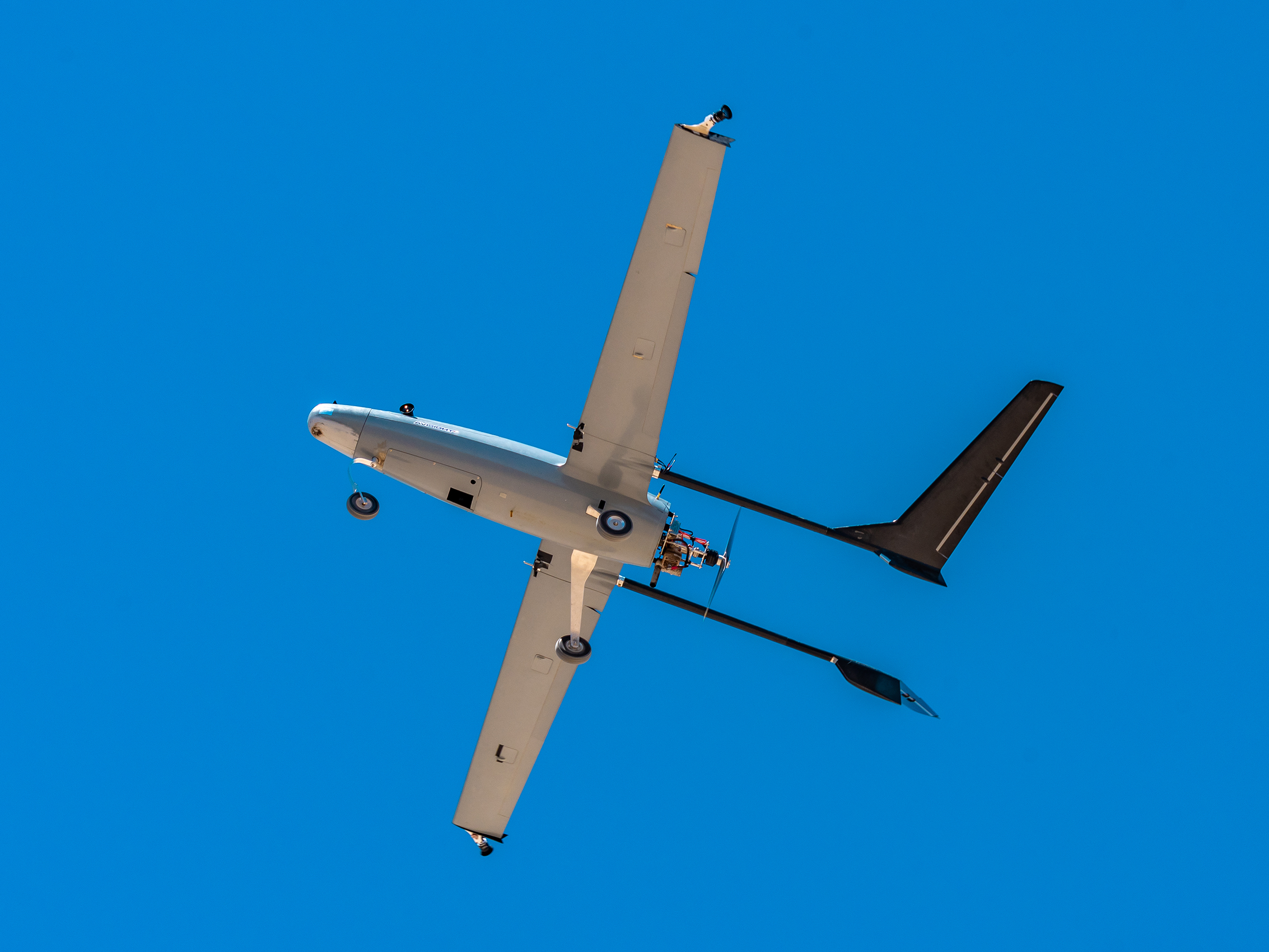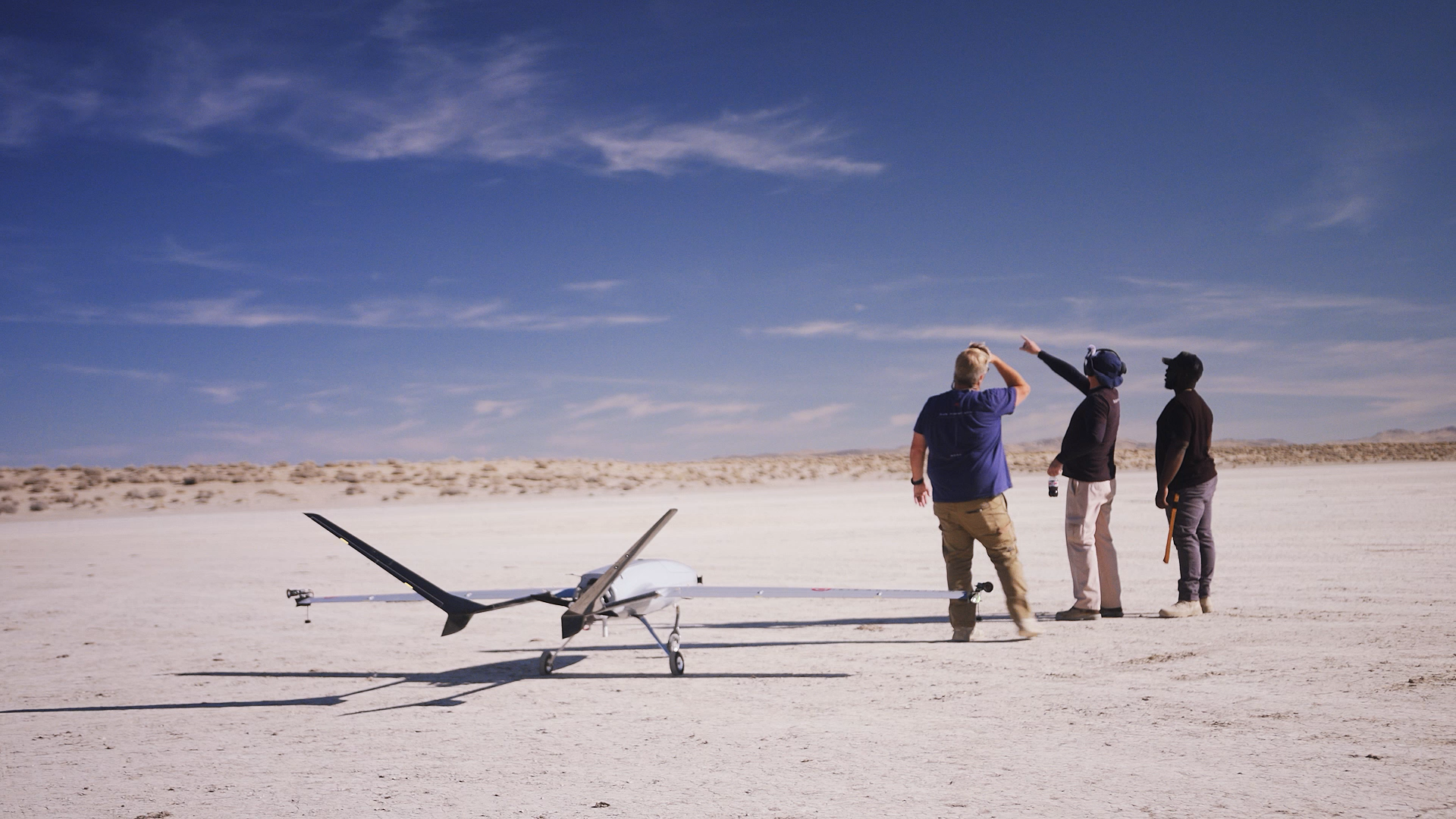On January 5th, Iris Automation announced a partnership with Doosan Mobility Innovations (DMI) and Drone America in which the three companies committed to a major collaboration. The agreement outlines both the integration of their respective technologies with one another as well as the sharing of operational resources for the testing and evaluation of aircraft platforms and infrastructure to support commercial beyond visual line of sight (BVLOS) operations.
What is the significance of these three particular companies getting together and working in tandem? Simply put, each one has a distinct product or solution that is designed to facilitate longer and more independent autonomous flights. In this case, the whole isn’t necessarily greater than the sum of the parts, but it does showcase what an especially well-defined BVLOS operation can look like.
Iris Automation’s detect and avoid (DAA) technology is the component that guarantees that all crewed and uncrewed platforms will maintain safe separation from fixed objects and from each other while flying unsupervised. DMI has focused on the development of longer-flying unmanned platforms by using hydrogen fuel cells as their power source. Drone America is focused on medium to large-scale aircraft and the autonomy of flight, notably for first responders, critical delivery services, inspections, and infrastructure surveying.
By aligning goals and resources, these three leaders of the industry have established a clear path forward for safer and longer flights in an effort to prove to the regulators like the FAA. This combination showcases that BVLOS, autonomous flights are feasible within the frame of existing technology. The true challenge is more about integration and testing than it is about the technical capability of the hardware or software.
We reached out to Lori DeMatteis, Global Vice President, sales, marketing and customer Success at Iris Automation during her busy schedule at CES, for an exclusive interview about the partnership and their immediate plans to make a difference in the industry.
“We are very excited that the industry is finally working together to bring together these kinds of solutions,” DeMatteis told Commercial UAV News. “We are moving from an individualistic siloed approach to joint partnerships and solutions which add value overall to the entire ecosystem, which is uplifting the entire ecosystem if you will.”

When the conversation turned to the motivations behind the partnership, DeMatteis mentioned that it was an initiative very much rooted in customer demands. The Iris Automation team has heard back from organizations and individual users who are under pressure to implement new technologies to lower operational costs and increase efficiencies. Those pressures are being driven by the understanding that innovations like drones represent the next era of digitization, with efficiencies that will impact the bottom line.
Looking at the three companies’ areas of expertise, it’s quite obvious that these are the areas that need to be addressed in order to establish commercial BVLOS flights as a daily reality and make that positive impact to the bottom line. Doing so will enable efficiencies that are possible and will undoubtedly change the way we do business today.
“I firmly believe this initiative will help, not only move our industry move forward faster, but it will help Corporate America increase efficiencies by allowing technologies that will contribute to safer working environments while making for a more efficient enterprise,” DeMatteis continued. “We are flying daily in an effort to create as many visual simulations as we can in order to establish a kind of digital twin that would allow for the recreation of real-life possible scenarios. Those sorts of assets would be immensely helpful in our dealings with the FAA.”
There is no doubt that by working closer together, Iris Automation, DMI and Drone America are proving what it can look like for complementing technologies to come together and define solutions that enable the full integration of crewed and uncrewed aerial platforms in controlled airspace. Doing so will benefit individual operators looking to enable efficiencies in the short term while also providing a path forward for the entire drone industry in the long term.















Comments